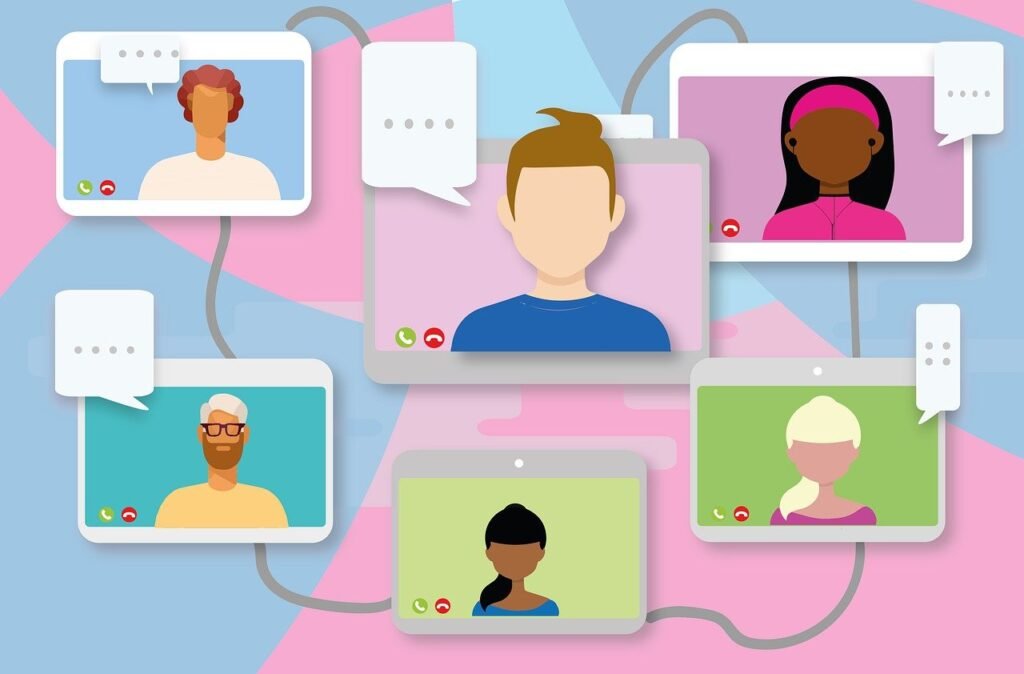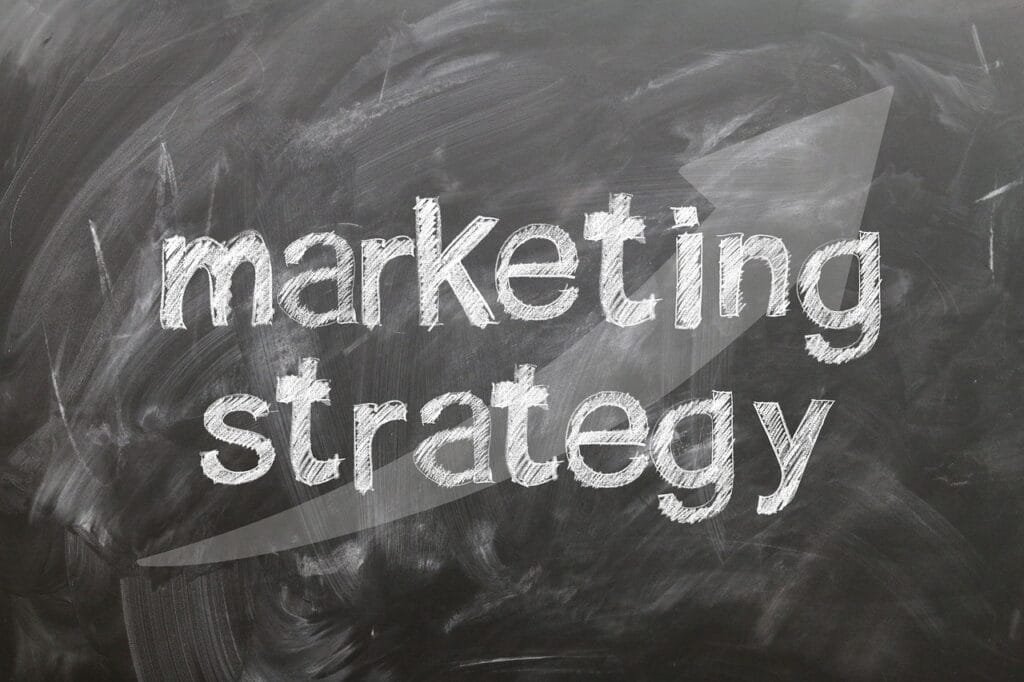This Article has been revised, edited and added to, by Poulomi Chakraborty.
- Understanding Personalization: A Comparison with Traditional Marketing
- Implementing Personalization Strategies in Digital Marketing
- Leveraging Technology for Personalized Interactions
- Crafting Personalized Content
- Enhancing User Experience Through Personalized Interfaces
- Building a Technology Stack for Personalization
- Cultivating a Culture of Experimentation
- Leveraging Advanced Analytics for Deeper Insights
- Integrating Personalization Across All Channels
- Fostering Personal Connections Through Content
- Continuous Learning and Adaptation
- Advanced Strategies for Enhancing Customer Engagement Through Personalized Marketing
- Creating a Personalized Customer Journey
- Leveraging Multi-Channel Personalization
- Enhancing Engagement Through Personalized Content Marketing
- Testing and Optimization
- Personalization Through Behavioral Email Marketing
- Customizing User Experience with AI
- Utilizing Location-Based Personalization
- Developing Dynamic Content Strategies
- Integrating Social Proof into Personalized Experiences
- Continuous Optimization Through Feedback Loops
- Tools and Technologies Facilitating Personalized Marketing Efforts
- Customer Data Platforms (CDPs)
- Examples
- Marketing Automation Platforms
- Examples
- AI and Machine Learning
- Examples
- Real-Time Interaction Management (RTIM)
- Examples
- Advanced CRM Solutions
- Predictive Analytics Tools
- Personalized Email Marketing Platforms
- Content Management Systems with Personalization Capabilities
- Integration Platforms
- Utilizing AI for Enhanced Personalization
- Developing a Tech Stack Strategy
- Conclusion
Welcome to the dynamic world of digital marketing, where personalization isn’t just an option—it’s the key to unlocking deeper connections with your audience. In today’s crowded digital space, crafting tailored experiences can make the difference between blending in and standing out. This article will guide you through the essence of personalization in digital marketing, helping you to not only understand its importance but also how to effectively implement it to captivate your audience.
Understanding Personalization: A Comparison with Traditional Marketing

Before the digital era, marketing was like using a megaphone at a football stadium; you broadcasted your message hoping it would resonate with someone in the crowd. Traditional marketing relied on broad, generalized messages designed to reach as wide an audience as possible.
Businesses would place ads in newspapers, on billboards, or during commercial breaks on television. The message was the same, irrespective of who encountered it, making it difficult to address individual preferences or needs.
Fast forward to the digital age, where personalization has revolutionized how businesses interact with their customers. Today, digital marketing is more like having a one-on-one conversation with each member of your audience.
Instead of a one-size-fits-all approach, digital platforms allow marketers to tailor content, offers, and experiences based on user data such as past behaviors, preferences, and even anticipatory needs.
The Impact of Data in Crafting Personalized Experiences
The shift from traditional to digital has been largely driven by the ability to collect and analyze vast amounts of data. Every click, like, share, and purchase can be tracked, providing marketers with a goldmine of information to create highly personalized marketing strategies.
For example, consider an online retailer that uses past purchase data to predict what products a customer might be interested in. When that customer visits the website, they are greeted with recommendations tailored to their tastes and previous shopping behavior.
This is in stark contrast to a traditional retail store where the sales strategies are static and the same promotional messages are displayed to everyone, regardless of their interests.
Personalization in Action: Real-World Applications
To illustrate, let’s look at a practical application of personalization in digital marketing. A company specializing in outdoor gear can use weather-related data to offer products that align with current weather conditions in a customer’s area.
If a customer frequently buys hiking gear and the forecast in their region calls for rain, the company’s website can dynamically display raincoats and waterproof hiking boots. This not only shows attentiveness to the customer’s specific needs but also enhances the likelihood of a purchase.
In contrast, a traditional outdoor gear retailer would have the same in-store displays regardless of varying weather conditions across different regions. This lack of personalization can lead to missed opportunities, as customers might not find what they need when they need it.
The Limitations of Traditional Marketing
Traditional marketing methods, such as mass advertising campaigns, print media, and generic television commercials, cast a wide net with the hope of catching a few relevant customers.
This approach not only results in high costs but also low conversion rates, as the generic message fails to resonate with the diverse needs and interests of a varied audience.
For startups, where budget constraints are common, investing heavily in broad-spectrum traditional marketing can drain resources rapidly, often without delivering proportional returns.
Transitioning to Personalization
The shift to personalized marketing should start with a clear understanding of your target audience. Define who your ideal customers are by creating detailed buyer personas that go beyond basic demographics to include psychographics like customer motivations, pain points, and buying behavior.
This foundational step is critical as it informs how you can tailor your marketing messages effectively.
Implementing Data-Driven Personalization
With a focus on personalization, startup founders can harness the power of data to deliver tailored messages that resonate deeply with their target audience. The first step is to set up systems to collect data at every customer touchpoint.
This includes website visits, social media interactions, email responses, and even offline interactions if applicable. Utilizing tools like Google Analytics and customer relationship management (CRM) software can help you gather and analyze this information.
Crafting Personalized Messages
Once you have a robust dataset, the next step is to utilize this information to craft marketing messages that speak directly to the needs and interests of your audience. For instance, if your data reveals that a significant segment of your audience prefers eco-friendly products, your marketing campaigns should highlight the sustainability aspects of your offerings. This approach not only improves the relevance of your messages but also enhances customer engagement and loyalty.
Personalization at Scale
As your startup grows, scaling personalized marketing might seem daunting. This is where automation tools become invaluable. Marketing automation platforms can help you maintain personal touch even as your customer base expands.
These tools can automate processes like segmenting your customer list based on their behavior or sending out personalized email campaigns triggered by specific customer actions. This ensures that your marketing efforts remain personal and relevant, without requiring constant manual intervention.
Measuring the Impact
Finally, the effectiveness of transitioning from traditional to personalized marketing should be continuously measured and optimized. Use key performance indicators (KPIs) such as conversion rates, customer acquisition costs, and customer retention rates to gauge the success of your personalized marketing strategies.
Regularly revisiting these metrics and tweaking your strategies based on the insights they provide will ensure that your marketing efforts are not only personalized but also profitable.
Through these examples, it’s clear that personalization in digital marketing not only enhances customer experience but also boosts business outcomes by delivering relevant and timely solutions to individual customers.
This tailored approach fosters a deeper connection between brand and consumer, driving engagement, loyalty, and ultimately, sales.
Implementing Personalization Strategies in Digital Marketing

Implementing personalization in your digital marketing strategy is not just about leveraging technology but also about fostering a genuine connection with your audience. Here’s how you can begin to create these personalized experiences that resonate with your customers and drive meaningful engagement.
Leveraging Technology for Personalized Interactions
Utilizing Customer Data Platforms
To truly personalize your marketing efforts, you need a robust system in place to collect, analyze, and act on customer data. A Customer Data Platform (CDP) is essential for this purpose. It integrates data from multiple sources, including web interactions, mobile apps, and social media activities, creating a comprehensive profile of each customer. This profile then informs targeted marketing strategies, allowing for more precise messaging that speaks directly to the individual’s preferences and needs.
For instance, by understanding a customer’s browsing habits and purchase history, a CDP can help you craft email campaigns that feature products they are likely to be interested in, rather than generic promotions that may have less appeal.
Predictive Analytics and Machine Learning
Advances in predictive analytics and machine learning offer another layer of personalization. These technologies can forecast future behavior based on past data, making it possible to anticipate a customer’s needs before they even articulate them. For example, if data shows that a customer buys a new type of skincare product every three months, your digital marketing systems can automatically send them a reminder when it’s time to reorder, possibly coupled with a personalized discount on their favorite products.
Crafting Personalized Content
Content is king in digital marketing, but personalized content is the ace. Tailoring content to meet the specific interests and needs of your audience can dramatically increase engagement rates. This involves more than just inserting a customer’s name into an email. It’s about creating content that resonates on a deeper level.
Segmenting Your Audience
Effective content personalization starts with audience segmentation. Divide your audience into groups based on demographics, behavior patterns, and purchase history. For each segment, develop tailored content that addresses their specific concerns, desires, or lifestyle. For example, a fitness brand might create different content strategies for those who are new to fitness versus seasoned athletes, providing each group with relevant advice, products, and motivational stories.
Personalized Video Content
Video content can be particularly powerful when personalized. A simple example is sending personalized video messages rather than standard email birthday greetings. More sophisticated applications might include interactive videos that change based on user choices, providing a unique experience for each viewer.
Enhancing User Experience Through Personalized Interfaces
The user experience on your website or app can also be personalized to improve engagement. Using data to adjust the interface so it better aligns with a user’s preferences can make them feel more at home with your brand.
Dynamic Websites
Dynamic websites adjust content, imagery, and even navigation based on the interests or past behavior of the visitor. If a visitor has shown an interest in a particular product category, for instance, your website can feature that category prominently during future visits. This not only makes the shopping experience more intuitive but also increases the likelihood of conversion.
Personalized Recommendations
Most online users are familiar with personalized recommendations, a la Netflix or Amazon. Implementing similar features on your website can guide users to products or content they might like, based on their past interactions. This not only enhances the user experience but also increases the time spent on your site, boosting opportunities for engagement and sales.
Building a Technology Stack for Personalization
The foundation of any successful digital marketing strategy today involves a robust technology stack that can handle data collection, analysis, and the automated delivery of personalized content. As a startup founder, it’s crucial to select technologies that are scalable and can integrate seamlessly with one another.
Starting with a solid CRM system is a wise choice as it collects and organizes customer data centrally. Pair this with marketing automation software that can trigger actions based on specific customer behaviors or milestones.
Cultivating a Culture of Experimentation
In the realm of digital marketing, one size does not fit all, and what works for one segment of your audience may not work for another. It is essential for startups to cultivate a culture of experimentation.
Regular testing of your personalization strategies, like A/B testing different email marketing campaigns or landing pages, allows you to understand what resonates best with your audience. This culture not only helps in refining marketing tactics but also encourages innovation within your team.
Leveraging Advanced Analytics for Deeper Insights
To truly personalize, you need to understand your customers beyond surface-level interactions. Advanced analytics tools can provide deeper insights into customer behavior, preferences, and predictive trends.
Investing in analytics platforms that offer detailed reporting and visualization tools can help you make sense of complex data and uncover patterns that inform more targeted marketing strategies. For instance, understanding customer lifecycle stages can help you deliver more relevant content that meets their needs at each point in their journey.
Integrating Personalization Across All Channels
Personalization should be a holistic approach, not limited to just one or two channels. Ensure that your personalization efforts are integrated across all digital marketing channels—from your website and emails to social media and mobile apps.
This ensures a cohesive customer experience, regardless of how or where your customer interacts with your brand. For example, if a customer abandons a cart in your online store, you can send them a personalized email reminder and display retargeting ads on social media platforms they frequent.
Fostering Personal Connections Through Content
Creating personalized content that speaks directly to the individual needs and interests of your customers can significantly enhance engagement. This involves more than just addressing the customer by name in emails.
It means developing content that addresses their specific concerns or interests, whether it’s through customized blog posts, videos, or personalized product recommendations.
Utilizing user-generated content, such as customer reviews and testimonials, tailored to different customer profiles can also add a layer of authenticity and personal connection to your brand.
Continuous Learning and Adaptation
The digital landscape is perpetually evolving, and so are customer expectations. Continuous learning and adaptation of your personalization strategies are crucial. Keep abreast of the latest technologies, strategies, and consumer behavior trends.
Regular training for your team in these areas can help your startup remain agile and responsive to changes in the market.

Related: Check out our free SEO suite

Advanced Strategies for Enhancing Customer Engagement Through Personalized Marketing
As we delve deeper into personalized marketing, it’s essential to focus on strategies that not only capture attention but also foster lasting engagement. By enhancing the customer journey with personalized touchpoints, you create a seamless and memorable experience that encourages loyalty and increases customer lifetime value.
Creating a Personalized Customer Journey
Mapping the Customer Journey with a Personal Touch
To effectively personalize the customer experience, start by mapping out the customer journey from initial contact through to post-purchase. At each stage, identify opportunities for personalized interactions.
This could involve tailored welcome emails, personalized product recommendations, or even customized support options. By understanding and addressing the specific needs at each stage, you can significantly enhance the overall customer experience.
For instance, if a customer abandons their shopping cart, instead of sending a generic cart reminder, send a personalized message that references the exact items they considered, with additional information like reviews, a limited-time discount, or alternative suggestions based on their browsing history.
Real-Time Personalization
Utilize real-time data to offer instant personalization. Technologies such as AI and machine learning can analyze a customer’s current behavior on your website to immediately adjust the content, deals, and recommendations they see.
For example, if a customer spends time looking at summer dresses, your site can dynamically adjust to highlight accessories or shoes that would complement their potential purchase.
Leveraging Multi-Channel Personalization
To truly stand out, ensure your personalization strategies encompass multiple channels. This creates a cohesive and unified customer experience regardless of how or where a customer interacts with your brand.
Consistent Cross-Channel Messaging
Ensure that your messaging is consistent across all channels but tailored to the strengths and typical user behavior associated with each one. For example, email can be used for in-depth content such as newsletters and detailed product information, while social media might be more suitable for engaging visual content and quick updates. Tailor the message to fit the channel but keep the core message and personalization consistent.
Personalized Mobile Experiences
With the increasing use of smartphones, personalized mobile marketing has become crucial. This includes mobile-specific features such as push notifications tailored to user preferences, location-based services that offer promotions based on geographical data, and mobile apps with personalized interfaces.
Enhancing Engagement Through Personalized Content Marketing
Content marketing benefits greatly from personalization. By delivering content that is highly relevant and engaging to a specific audience, you can increase interaction rates significantly.
Personalized Blogging
Instead of writing generic blog posts, tailor your blogs to address the specific needs, questions, or interests of different segments of your audience. Use data to understand which topics resonate most with each segment and customize your content accordingly.
Interactive Content
Create interactive content such as quizzes, polls, or interactive infographics that personalize the results based on user responses. This not only increases engagement but also provides you with more insights into your audience’s preferences and behaviors, which can inform future personalization efforts.
Testing and Optimization
Finally, an effective personalized marketing strategy requires continual testing and optimization. Use A/B testing to trial different personalized elements and see what works best. Analyze the data to understand which strategies are increasing engagement and conversion rates, and adjust your approach accordingly.
Personalization Through Behavioral Email Marketing
Email marketing remains one of the most effective channels for personalization, especially when enhanced by behavioral triggers. Instead of sending the same message to your entire list, consider emails triggered by specific actions a customer takes.
For instance, if a customer views a particular product but does not make a purchase, a follow-up email can offer more information, customer reviews, or a time-limited discount for that product. This strategy not only increases the relevance of your communications but also encourages customers to complete their purchases.
Customizing User Experience with AI

Artificial intelligence (AI) can provide a powerful boost to personalizing the user experience on your website or app. AI technologies like machine learning algorithms can analyze a user’s interaction pattern and adjust the interface dynamically to suit their preferences.
For example, if a user frequently purchases books from a specific genre, your website can prioritize displaying this genre on their next visit. Similarly, AI can optimize the layout of your app based on the features that the user interacts with the most.
Utilizing Location-Based Personalization
Geotargeting is an advanced personalization strategy that tailors your marketing messages based on the user’s geographic location. This is particularly effective for startups with physical locations or localized services.
By integrating location-based technology into your app or website, you can push relevant promotions, events, or alerts specific to the user’s locale. This not only enhances the user experience but also increases the likelihood of conversion by offering timely and relevant deals.
Developing Dynamic Content Strategies
Dynamic content is a sophisticated tool that changes based on the behavior, preferences, or past interaction history of the user. Consider developing a content strategy that adapts in real time to the interests shown by a visitor on your site.
If a user spends time on specific blog posts or product categories, the next visit could highlight similar themes or products prominently. This adaptability makes your website more engaging and significantly enhances the user experience.
Integrating Social Proof into Personalized Experiences
Incorporating social proof into personalized marketing efforts can greatly enhance credibility and trustworthiness. For example, showing user-generated content, like customer testimonials or social media posts from users who have purchased a product, can influence the buying decisions of prospective customers.
Personalizing these displays—such as showing testimonials from users in the same demographic or location as the visitor—can make the social proof even more compelling and relevant.
Continuous Optimization Through Feedback Loops
Creating a feedback loop with your customers is an essential strategy for maintaining the effectiveness of your personalized marketing efforts. Regularly solicit feedback through surveys, user activity analyses, and direct communication to understand how well your personalization strategies are being received.
Use this feedback to refine and adapt your efforts continuously, ensuring they remain relevant and impactful as customer preferences and market dynamics evolve.
Tools and Technologies Facilitating Personalized Marketing Efforts

To execute personalized marketing strategies effectively, businesses rely on a variety of sophisticated tools and technologies. These platforms help in collecting data, analyzing behavior, and automating personalized communications. Let’s explore some of the key technologies that are empowering marketers to create more personalized experiences for their customers.
Customer Data Platforms (CDPs)
Overview
A Customer Data Platform (CDP) is a crucial tool for personalization. It collects data from multiple sources, integrates this information to create a comprehensive customer profile, and makes this data accessible to other marketing systems. This enables marketers to tailor their communications based on a deep understanding of each customer’s behavior and preferences.
Key Features
- Data Integration: CDPs can collect data from online and offline sources including websites, mobile apps, and CRM systems.
- Real-Time Processing: They process data in real-time, allowing marketers to quickly adapt their strategies based on customer interactions.
- Segmentation: CDPs provide advanced segmentation capabilities, enabling targeted marketing campaigns.
Examples
- Segment: Offers robust data integration capabilities that help businesses collect, unify, and route their customer data to hundreds of marketing tools.
- Tealium: Focuses on real-time data collection and management, providing solutions to create a unified customer profile that’s accessible across the entire organization.
Marketing Automation Platforms
Overview
Marketing automation platforms are essential for executing personalized marketing strategies at scale. They automate repetitive tasks such as sending emails, posting on social media, and managing ad campaigns, all tailored to the user’s profile.
Key Features
- Email Personalization: Automate email campaigns with personalized messages and offers based on user behavior and preferences.
- Lead Scoring: Identify and prioritize leads based on their engagement level and likelihood to convert.
- Campaign Management: Design and execute multiple campaigns across different channels, tailoring each interaction based on customer data.
Examples
- HubSpot: Known for its all-in-one marketing suite that includes email marketing, social media management, and CRM integration.
- Marketo: Offers comprehensive features for automation across email, mobile, social, digital ads, and web management.
AI and Machine Learning
Overview
Artificial intelligence (AI) and machine learning (ML) technologies are at the forefront of driving advanced personalization. These technologies analyze large volumes of data to identify patterns and predict customer behaviors, enabling more precise personalization.
Key Features
- Predictive Analytics: Use historical data to predict future behaviors, such as potential purchases or churn risk.
- Content Personalization: AI algorithms can suggest personalized content to users based on their past interactions and preferences.
- Chatbots and Virtual Assistants: These AI-driven tools can provide real-time, personalized assistance to customers, improving the service experience.
Examples
- Adobe Sensei: Uses AI and machine learning to power intelligent features across Adobe’s cloud platform, enhancing personalization and automation.
- Salesforce Einstein: Salesforce’s AI technology that predicts customer behavior, recommends next steps, and automates tasks across sales, service, and marketing.
Real-Time Interaction Management (RTIM)
Overview
RTIM solutions allow businesses to manage and personalize customer interactions in real-time across multiple channels. These tools are vital for creating a seamless customer experience that is responsive and personalized based on real-time data.
Key Features
- Contextual Personalization: Adjusts the content and offers shown to a customer based on current interactions and behaviors.
- Omnichannel Journey Orchestration: Manages and coordinates customer interactions across all channels, ensuring consistency and relevance.
Examples
- Pega: Specializes in customer engagement and digital process automation, with strong capabilities in real-time interaction management.
- Evergage: Now part of Salesforce, provides cloud-based software that enables real-time personalization and customer data analysis.
Advanced CRM Solutions
Customer Relationship Management (CRM) systems are pivotal in collecting and organizing customer data. For startups, an advanced CRM that integrates seamlessly with other marketing tools can provide a competitive edge. It’s important to choose a CRM that offers robust analytics capabilities and can scale as your business grows.
CRMs like Salesforce and HubSpot are popular for their extensive features, including lead tracking, customer service integration, and marketing automation, all of which are invaluable for personalization.
Predictive Analytics Tools
Leveraging predictive analytics can take personalization to the next level. These tools use historical data to forecast future customer behaviors and preferences, allowing startups to anticipate needs and tailor their marketing efforts accordingly.
Platforms like IBM Watson provide predictive analytics that can help startups understand potential customer actions, optimize their marketing strategies, and personalize customer interactions based on predictive insights.
Personalized Email Marketing Platforms
Email remains a highly effective channel for personalized marketing. Tools that specialize in email marketing, such as Mailchimp or Sendinblue, offer features like segmentation, A/B testing, and automated campaign triggers based on user behavior.
These platforms help startups deliver personalized messages at scale, ensuring that each communication is tailored to the recipient’s current needs and engagement level.
Content Management Systems with Personalization Capabilities

A Content Management System (CMS) that supports personalization can drastically enhance the user experience on your website. Systems like WordPress, coupled with plugins like HubSpot or Salesforce, allow for dynamic content personalization.
This means you can display different content to users based on their past behavior, location, or engagement with your site, making each visit unique and tailored to individual preferences.
Integration Platforms
As startups grow, the integration of various marketing tools becomes essential to maintain a seamless flow of data and ensure that all tools work in harmony. Platforms like Zapier or Integromat can automate workflows and connect disparate systems, such as your CRM, email marketing platform, and CMS.
This connectivity ensures that all customer interactions are informed by the latest data, enabling real-time personalization across all channels.
Utilizing AI for Enhanced Personalization
Artificial Intelligence (AI) technologies can automate complex processes and provide insights that go beyond human capabilities. AI-driven tools like Adobe Sensei or Google AI can analyze customer data at scale, identify trends, and automate personalized content creation and distribution. For startups, this means being able to deliver highly personalized experiences without the need for extensive manual effort.
Developing a Tech Stack Strategy
Choosing the right combination of these tools involves understanding not only your current business needs but also anticipating future growth. It’s essential for startups to develop a tech stack strategy that includes tools which integrate well with each other, are scalable, and can adapt to evolving marketing goals.
This strategic approach ensures that your investment in technology pays off in the long term, enabling effective personalization at every stage of your business growth.
Conclusion
In the ever-evolving landscape of digital marketing, personalization stands out as a crucial strategy for building deeper connections with customers. By leveraging cutting-edge tools like Customer Data Platforms, Marketing Automation, AI and Machine Learning, and Real-Time Interaction Management, businesses can tailor their marketing efforts to meet the unique preferences and needs of their audience. These technologies enable not only the collection and analysis of vast amounts of data but also the automation of personalized marketing messages across multiple channels.
The key to successful personalization is a deep understanding of your customer’s journey and the ability to deliver relevant, engaging content at each touchpoint. Brands like Spotify, Amazon, Coca-Cola, and Nike have demonstrated how effective personalization can significantly enhance customer engagement and loyalty. As we move forward, the integration of these sophisticated technologies into marketing strategies will become the standard, driving the future of customer interactions in digital spaces. Implementing these practices thoughtfully will ensure your marketing not only captures attention but also fosters lasting relationships with your audience.
Read Next
- Keyword Research for Startup YouTube Channel: Video SEO Strategies
- Keyword Clustering: Organizing Keywords for Content Strategy
- Using Google Trends for Trending Keyword Opportunities
- How to Use Seed Keywords to Expand Your Startup
- Creating a Keyword Research Workflow for Startup Success






















Comments are closed.